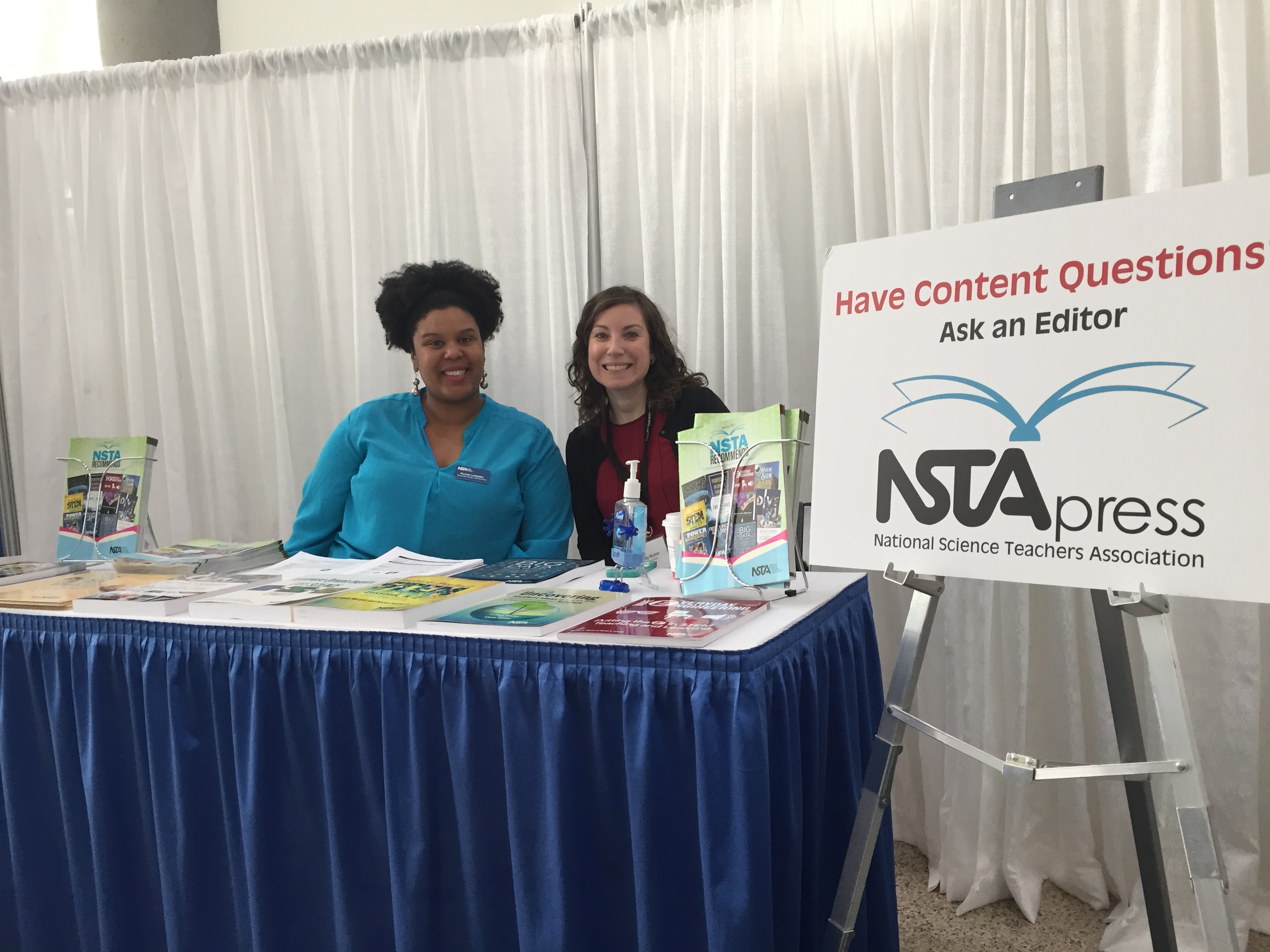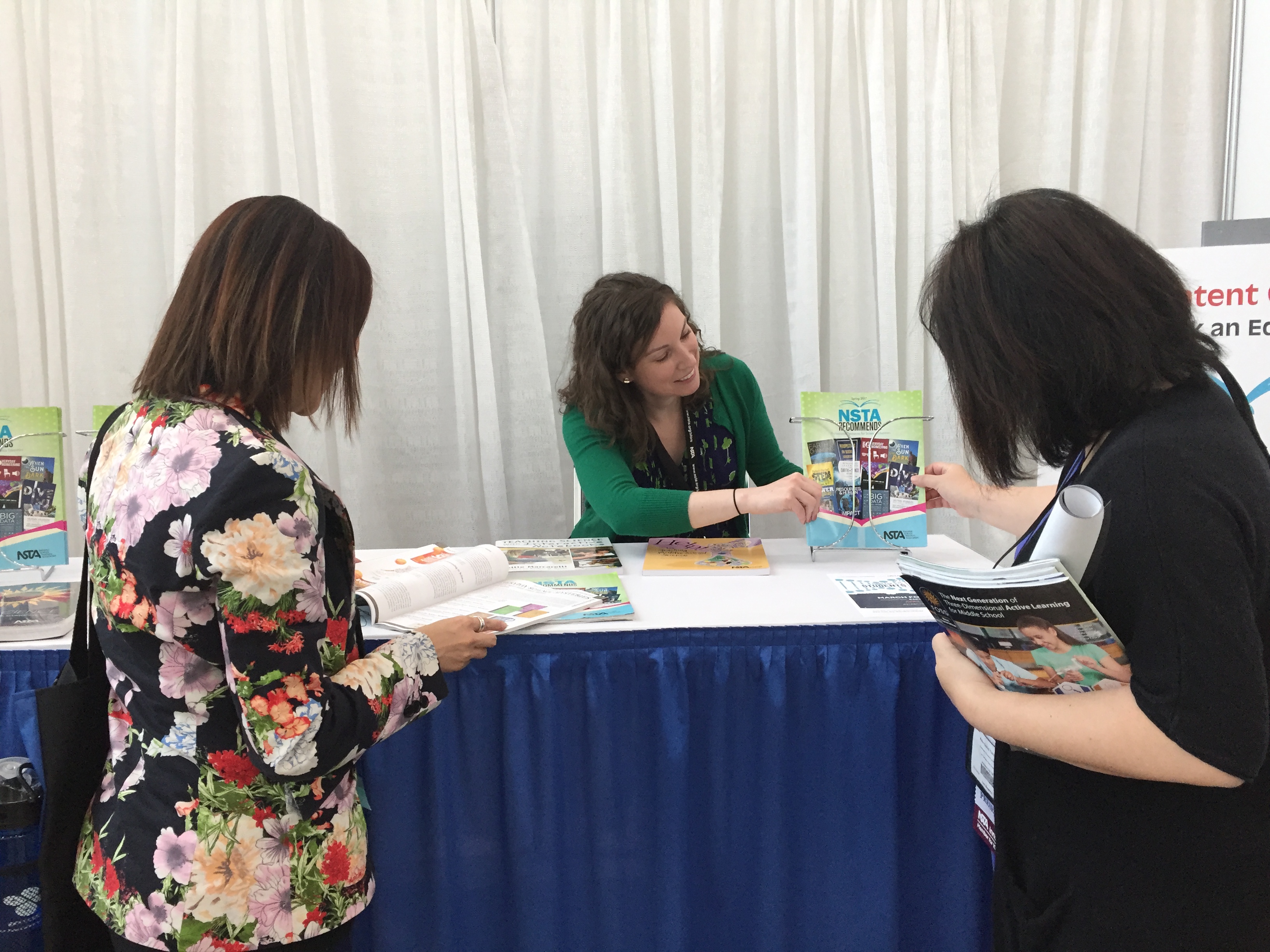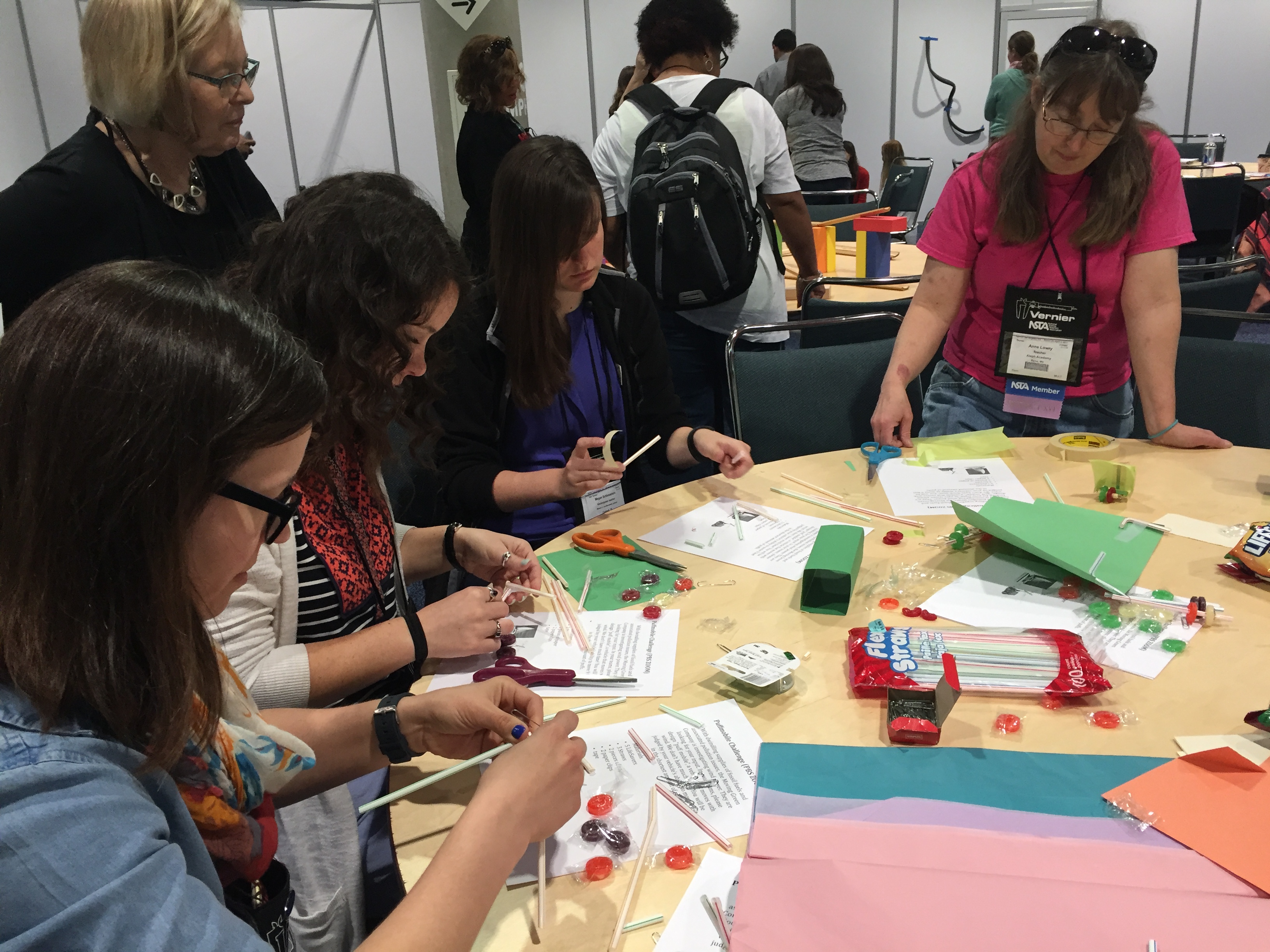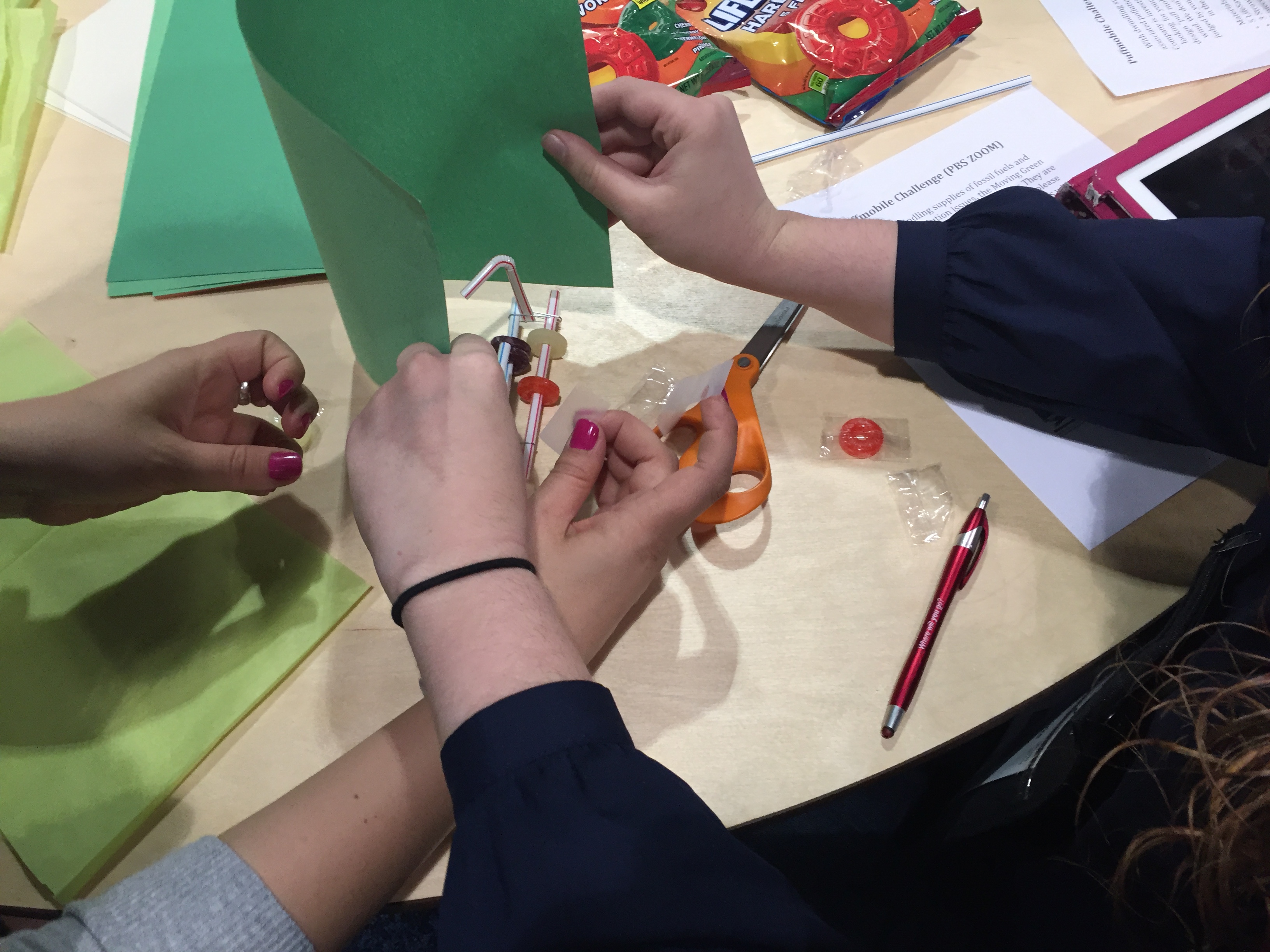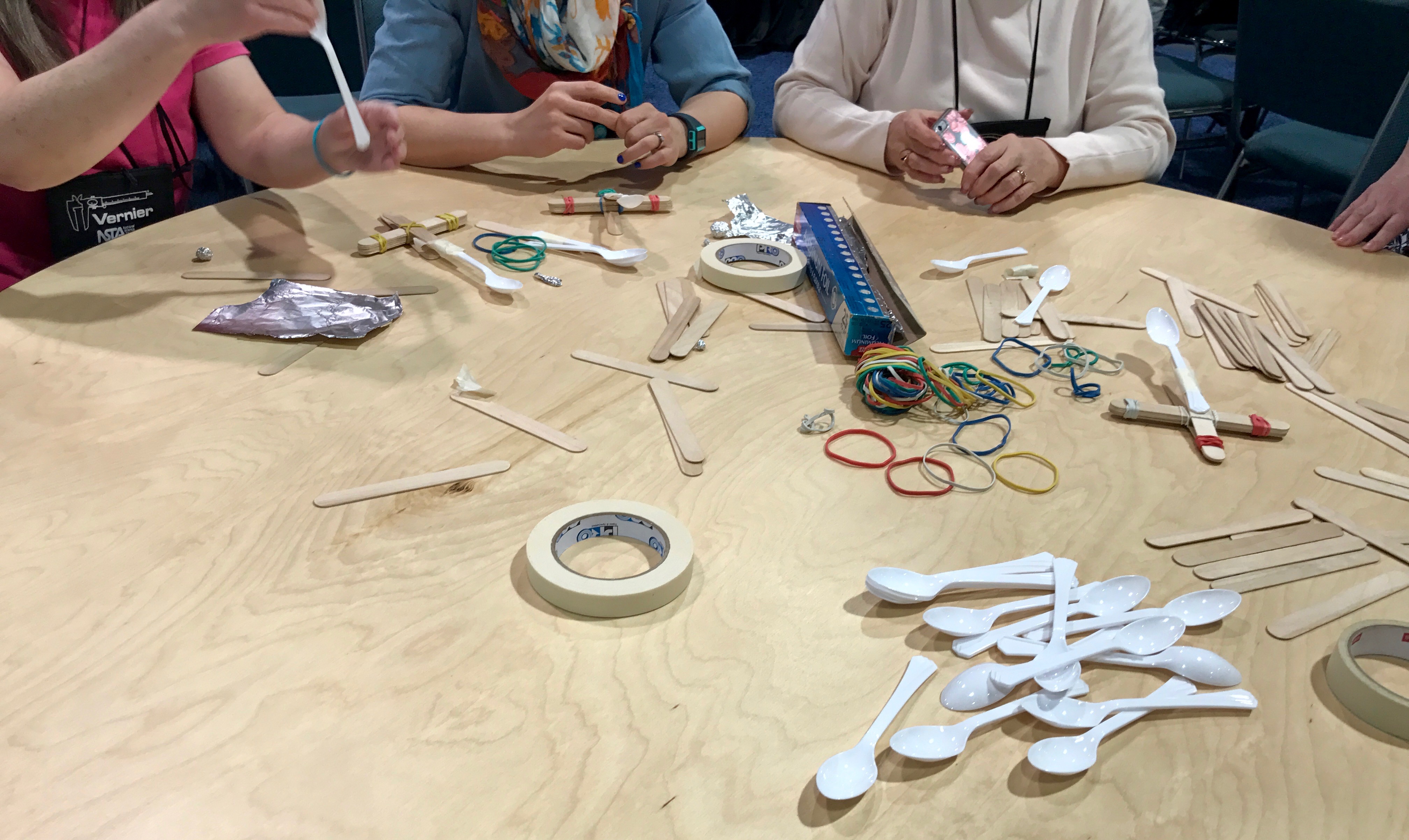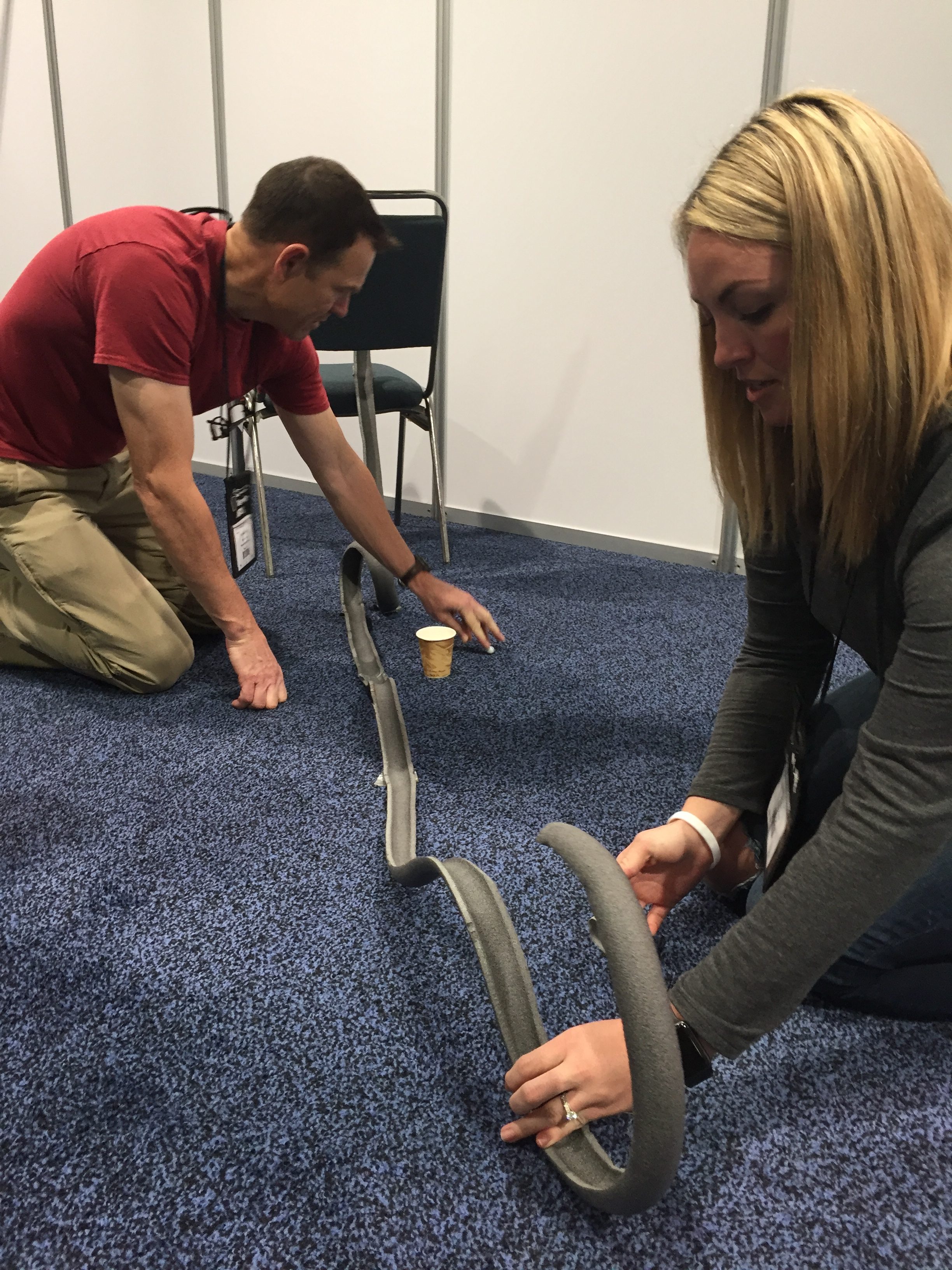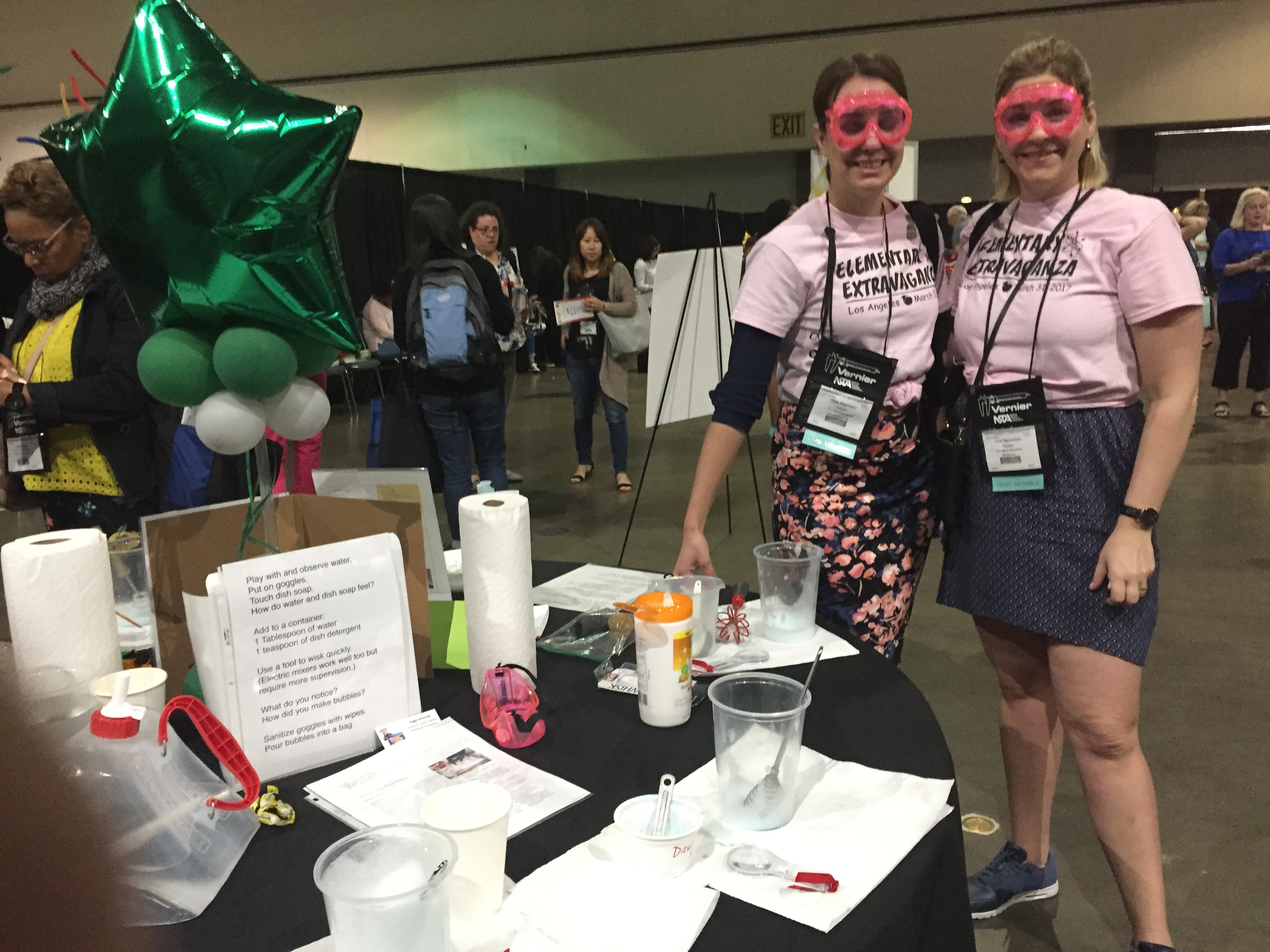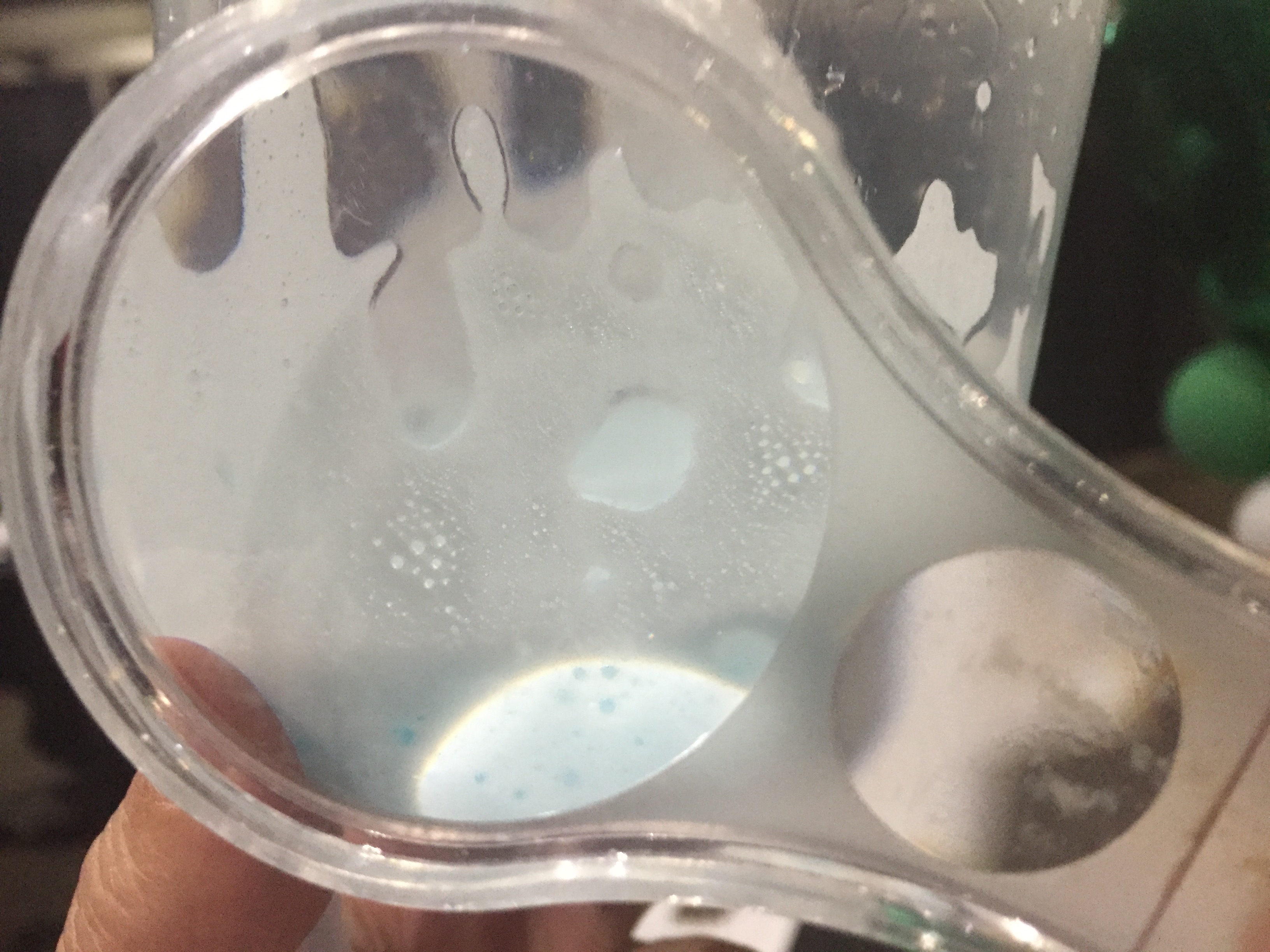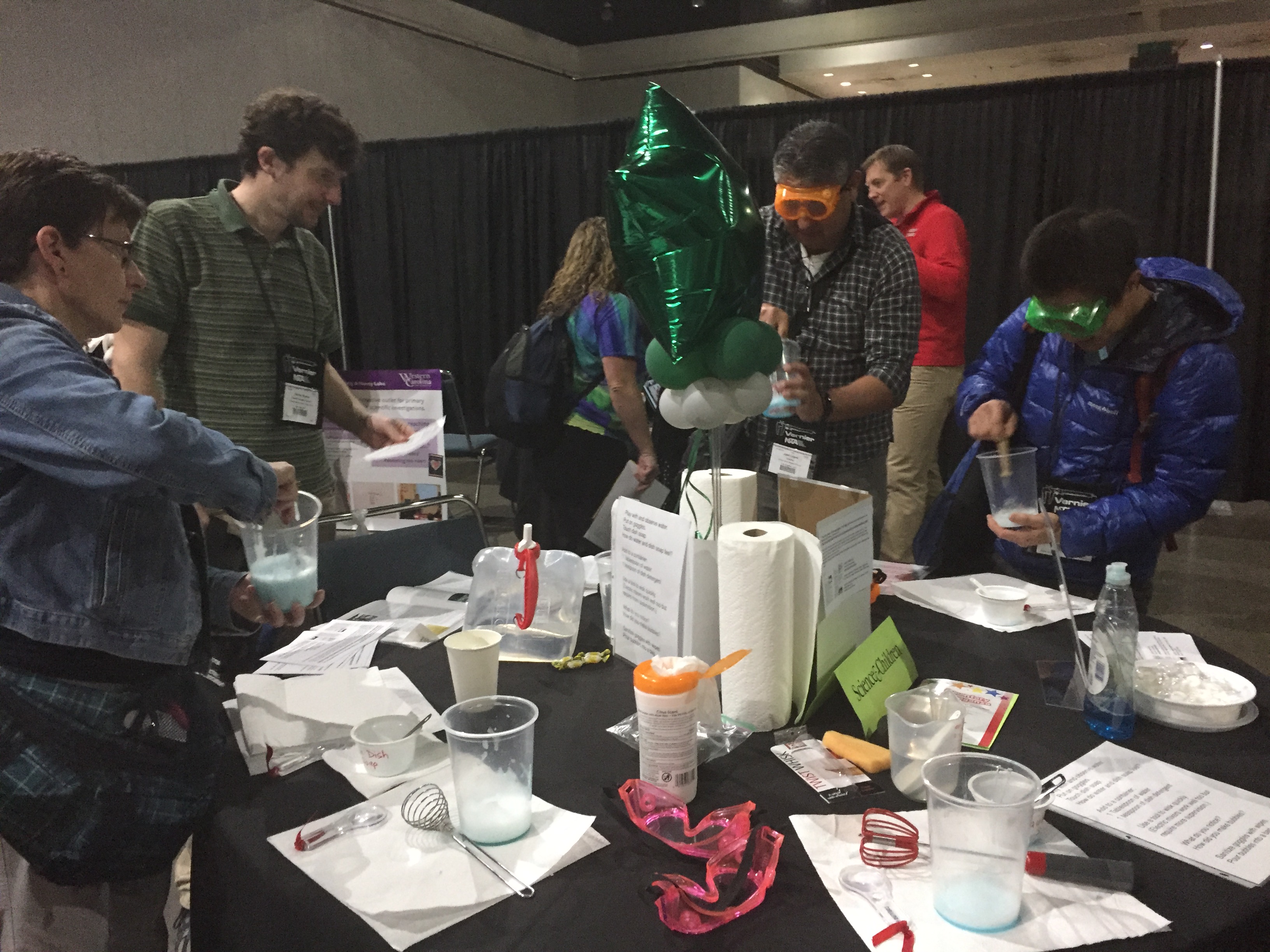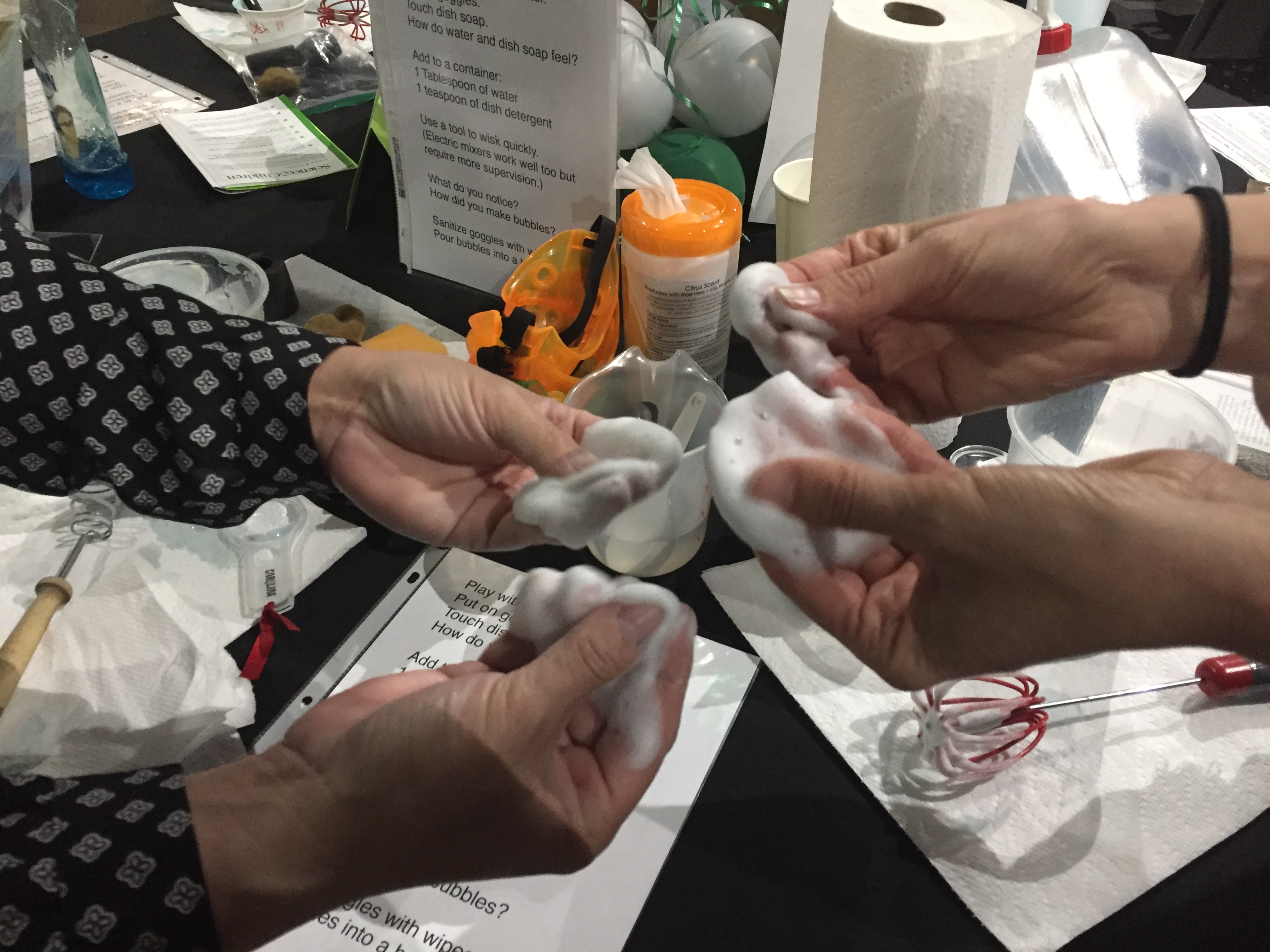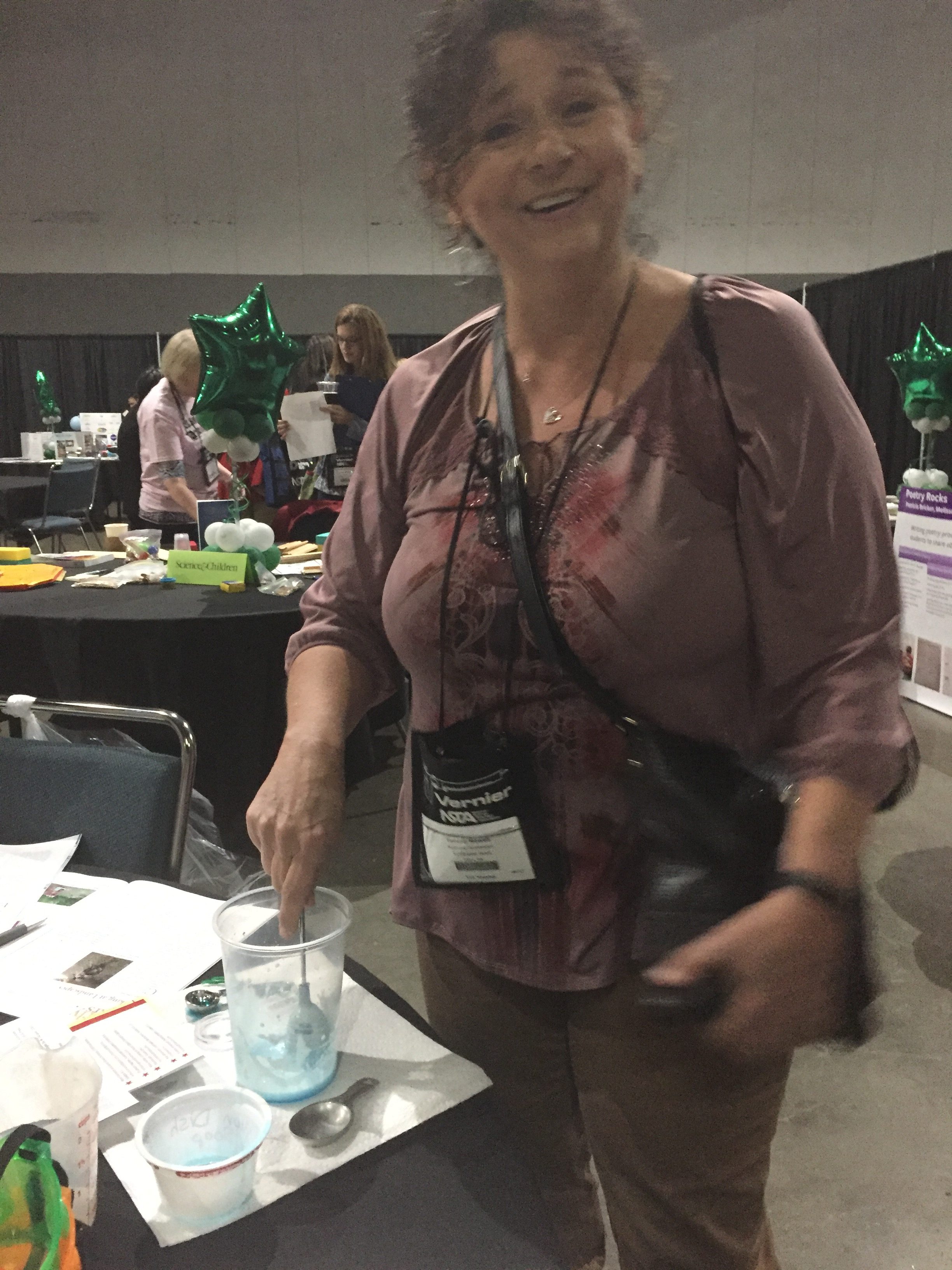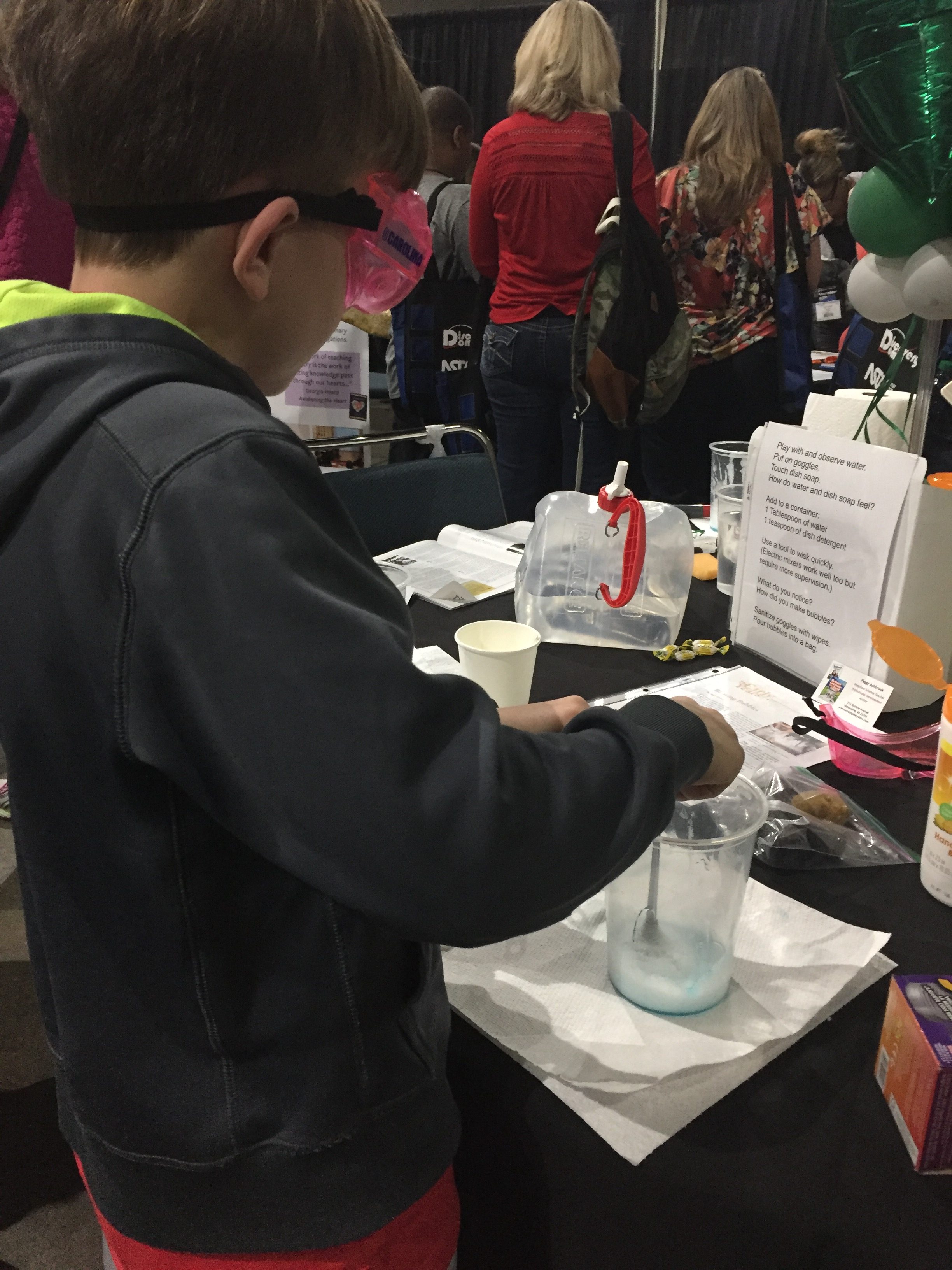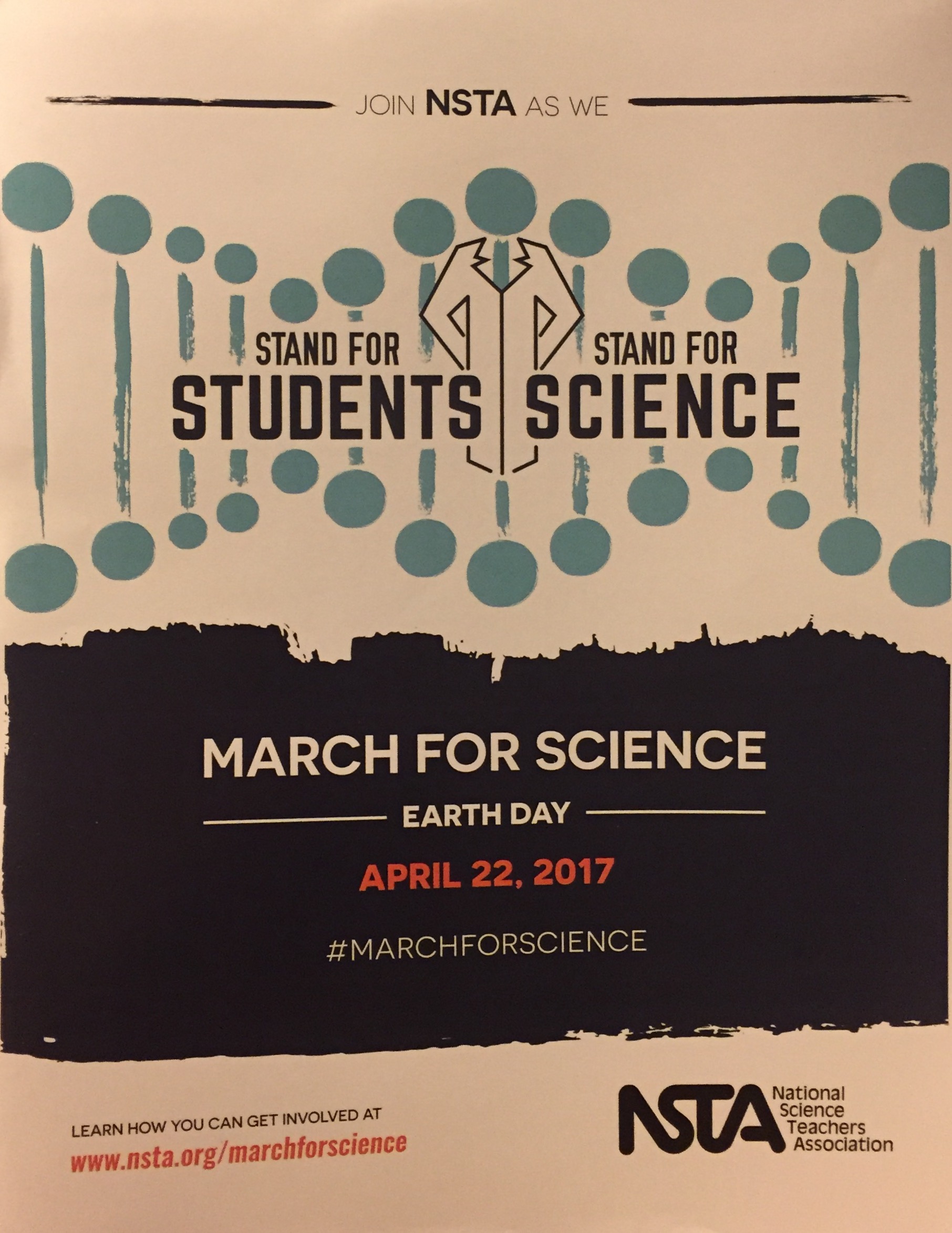When early childhood educators conference & talk about science education
By Peggy Ashbrook
Posted on 2017-04-06
 The National Science Teachers Association’s annual conference brings educators from many places in the world together to build their science teaching skills, science content, reaffirm connections with colleagues and make new connections. Arriving in LA, the lights and action were a striking contrast to the vibrant rainbow began my week but this change in environment is one of the reasons to travel to
The National Science Teachers Association’s annual conference brings educators from many places in the world together to build their science teaching skills, science content, reaffirm connections with colleagues and make new connections. Arriving in LA, the lights and action were a striking contrast to the vibrant rainbow began my week but this change in environment is one of the reasons to travel to  an education conference. California big city delights included tall buildings whose faces changed with the time of day, public plantings so different from what I see at home, and architectural details recalling geometry and nature. I hope this conference recounting will inspire you to seek out NSTA experiences at conferences and resources online. Many, many conference session handouts are uploaded to the conference scheduler for you to access. Search for the sessions you attended or topics that interest you, click on the title and then scroll down to see and access uploaded files.
an education conference. California big city delights included tall buildings whose faces changed with the time of day, public plantings so different from what I see at home, and architectural details recalling geometry and nature. I hope this conference recounting will inspire you to seek out NSTA experiences at conferences and resources online. Many, many conference session handouts are uploaded to the conference scheduler for you to access. Search for the sessions you attended or topics that interest you, click on the title and then scroll down to see and access uploaded files.
This is a long post but there is a cute dog picture at the end.
 Anyone want to estimate how many selfies and photos with colleagues were taken this week? Very loosely based on the number of photos on my phone, at least 10 times thousands of attendees. Meeting up with early childhood colleagues who teach young children or preservice teachers, or write about science education, re-opens conversations begun at previous conferences or online. Science educators are fun people!
Anyone want to estimate how many selfies and photos with colleagues were taken this week? Very loosely based on the number of photos on my phone, at least 10 times thousands of attendees. Meeting up with early childhood colleagues who teach young children or preservice teachers, or write about science education, re-opens conversations begun at previous conferences or online. Science educators are fun people!
 We also like to argue. One of the eight practices of science and engineering in the Next Generation Science Standards is Practice 7, Engaging in Argument from Evidence: “Argumentation is a process for reaching agreements about explanations and design solutions. In science, reasoning and argument based on evidence are essential in identifying the best explanation for a natural phenomenon. In engineering, reasoning and argument are needed to identify the best solution to a design problem.” In his Planetary Society Lecture, “Everything All at Once,” Bill Nye, Science Guy and CEO of The Planetary Society, spoke about his career journey and our collective responsibility to consider how scientific agreement identifying the best explanation for changes in climate due to human action should inform our individual actions and national priorities. The vibe in the room showed that we science educators are ready to go out and help our students change the world!
We also like to argue. One of the eight practices of science and engineering in the Next Generation Science Standards is Practice 7, Engaging in Argument from Evidence: “Argumentation is a process for reaching agreements about explanations and design solutions. In science, reasoning and argument based on evidence are essential in identifying the best explanation for a natural phenomenon. In engineering, reasoning and argument are needed to identify the best solution to a design problem.” In his Planetary Society Lecture, “Everything All at Once,” Bill Nye, Science Guy and CEO of The Planetary Society, spoke about his career journey and our collective responsibility to consider how scientific agreement identifying the best explanation for changes in climate due to human action should inform our individual actions and national priorities. The vibe in the room showed that we science educators are ready to go out and help our students change the world!

 Did you have an eight o’clock session? Visiting the Exhibit Hall soon after opening meant there were fewer people in line to drive a Toyota Mirai. We sat in the real thing and drove models of it, competing against each other for the shortest time around the track. Many, but not all of us need additional practice to traverse the track in less than one minute!
Did you have an eight o’clock session? Visiting the Exhibit Hall soon after opening meant there were fewer people in line to drive a Toyota Mirai. We sat in the real thing and drove models of it, competing against each other for the shortest time around the track. Many, but not all of us need additional practice to traverse the track in less than one minute!
The Mirai is a hydrogen fuel cell vehicle, just one of the new technologies in the Exhibit Hall. Feats of engineering were woven throughout the conference sessions, including one by Carrie Lynn Draper of Readiness Learning Associates who engaged us in designing a 
 robotic hand that could lift a cup in “NGSS Connections for TK and Preschool STEM Larning.” The materials in this challenge for adult learners included some materials commonly found in early childhood programs. We had some success but wished for more time to learn from our failures and improve our designs—something to remember when designing schedules for young learners. The variety of designs developed for this simple task is a reminder that we cannot limit children to teacher-designed challenges with teacher-selected materials and teachers’ criteria for success. Look for problems that are important to children in your classroom and other locations and find time and materials for children design solutions to meet their needs.
robotic hand that could lift a cup in “NGSS Connections for TK and Preschool STEM Larning.” The materials in this challenge for adult learners included some materials commonly found in early childhood programs. We had some success but wished for more time to learn from our failures and improve our designs—something to remember when designing schedules for young learners. The variety of designs developed for this simple task is a reminder that we cannot limit children to teacher-designed challenges with teacher-selected materials and teachers’ criteria for success. Look for problems that are important to children in your classroom and other locations and find time and materials for children design solutions to meet their needs.
View video clips of one educator’s design in action and her thoughts about redesign:
Video 1: A teacher engages in an engineering challenge to design and build a “hand” to lift a cup.
Video 2: A teacher describes how her designed tool works.
Video 3: A teacher describes what changes she might make to her designed tool to improve it.

 Speaking of time…Thank you to the NSTA conference staff who work all year to make these experiences possible, and to the NSTA staff who develop the resources and communication platforms that allow us to keep learning. At the conference, Science and Children Managing Editor Valynda Mayes talked with conference participants at the Members Lounge as well as at sessions, and Flavio Mendez, NSTA Learning Center Senior Director connected us to Learning Center resources and the badges we accumulated through our use of the LC resources. Many other staff working the conference bookstore and others behind the scenes allow conference participants to get the most out of their use of NSTA resources and membership. Thank you to all the NSTA employees who make this conference possible and to the Conference Committee Leaders and local volunteers!
Speaking of time…Thank you to the NSTA conference staff who work all year to make these experiences possible, and to the NSTA staff who develop the resources and communication platforms that allow us to keep learning. At the conference, Science and Children Managing Editor Valynda Mayes talked with conference participants at the Members Lounge as well as at sessions, and Flavio Mendez, NSTA Learning Center Senior Director connected us to Learning Center resources and the badges we accumulated through our use of the LC resources. Many other staff working the conference bookstore and others behind the scenes allow conference participants to get the most out of their use of NSTA resources and membership. Thank you to all the NSTA employees who make this conference possible and to the Conference Committee Leaders and local volunteers!
NSTA Press authors got to discuss their work in one-on-one conversations and explorations, and sign books so students will understand that books are written by real people and their teachers work hard to bring new ways of teaching back to the classroom. Lisa Nyberg and Julie McGough engaged us in the Power of Questioning and the Power of Investigating in Guiding Student Investigations, using water, clementines and candy. I got to sign books for educators who read my Early Years columns in Science and Children, and The Early Years blog, including for parents of one of the wonderful children who attended the conference, who asked, “Will you please dedicate this book to me?” I was delighted to!
 The Learning Center staff, led by Flavio Mendez, know how to celebrate the effort Learning Center members/users make to attend a conference. This teacher from Australia was recognized for the distance she traveled and her birthday. Who says science teachers can’t sing? We also got to learn how the Learning Center is used to support student learning by universities and to celebrate the Houston and the Dallas Independent School Districts that participated in the ExxonMobil Teachers Academy.
The Learning Center staff, led by Flavio Mendez, know how to celebrate the effort Learning Center members/users make to attend a conference. This teacher from Australia was recognized for the distance she traveled and her birthday. Who says science teachers can’t sing? We also got to learn how the Learning Center is used to support student learning by universities and to celebrate the Houston and the Dallas Independent School Districts that participated in the ExxonMobil Teachers Academy.
If you participate in the NSTA email listservs you probably looked for names you recognized as valuable contributors to these online conversations, arguments, and resource sharing, in the program guide when choosing among sessions to attend. Eric Cromwell of the Baltimore County Public Schools Office of Science in Towson, MD presented a hands-on workshop on “Checkerspot Challenge: Early Childhood Engineering” for grades K-2. The endangered Checkerspot butterfly, the Maryland state insect, lays its eggs on the White Turtlehead plant that grows in wet areas and is a favorite snack for the state’s plentiful deer. How to maintain enough of this plant to grow and sustain the Checkerspot butterfly population? Eric taught us a strategy for helping children work in small groups to design a technology to protect the plants from deer foraging. He  had us draw a large circle in the center of a large piece of newsprint, and divide the remaining space into four sections—this allows four people to first draw individual designs before sharing their ideas and discussing which components of each should go into the group’s first draft of a design to build and test. His state office ordered artificial flowers and a version of Tinkertoys, along with other materials for children to make models to represent their engineering design solution. When educators do engineering activities and participate in science inquiry ourselves, we experience the same design challenges children will engage in, learn what needs to be improved for children’s learning, and develop our understanding of the nature of science.
had us draw a large circle in the center of a large piece of newsprint, and divide the remaining space into four sections—this allows four people to first draw individual designs before sharing their ideas and discussing which components of each should go into the group’s first draft of a design to build and test. His state office ordered artificial flowers and a version of Tinkertoys, along with other materials for children to make models to represent their engineering design solution. When educators do engineering activities and participate in science inquiry ourselves, we experience the same design challenges children will engage in, learn what needs to be improved for children’s learning, and develop our understanding of the nature of science.
The leadership of NSTA includes grade level divisions who meet and plan how to best support the needs of educators at that level. The NSTA Preschool and Elementary Division collaborative session did a fabulous job in “Early Childhood Science Experiences: Laying the Foundation for More Complex Science Practices in the Future.” In just 60 minutes we were provided with four activities that represent a progression of increasing sophistication of student thinking in physical science (see APPENDIX E – Progressions Within the Next Generation Science Standards).
We constructed ramps and rolled objects down them, then redesigned the path to “make it better” and reach a goal we set for ourselves (go fast, go far, go up a slope, go around a corner, reach a cup…). We accepted a set of design constraints and made Puff Mobiles from a limited set of materials that we hoped would travel a set distance with just one puff of breath. We used plastic spoons, rubber bands, and tongue depressors to construct catapults.
And we designed “roller coasters” using materials that are a bit trickier to manipulate but allow greater flexibility in design.
Did you go to the Friday morning Elementary Extravaganza? I wouldn’t miss it, presenting this year about the concepts in my January 2016 Early Years column, property of matter, specifically foams. We made bubble foam and compared it to foams commonly used in our homes: cleaning sponges, natural sponges formed by ocean animals, foam curlers, and pipe insulating foam. After first feeling and describing the properties of water and dish soap, we used a simple tool and transformed the mixture into foam through the use of our force and motion.
I was happy to talk with principals and teachers from many different kinds of schools and other educational settings, all looking for resources, strategies, activities and other ideas to bring back to enrich their students’ education. It was interesting to compare how the few children present approached the materials compared with the adults who may have had much more experience with the materials—the children were more likely to ask to use the materials, and look at and follow the posted directions while adults often mixed ingredients without measuring or tried to use the whisks to blow bubbles. Do you think this means that science educators raise polite children or that we are a bunch of independent thinkers? The sample size was tiny so I’m not drawing a conclusion. In any case we all learned from our exploration! Want to share the work you presented at the Elementary Extravaganza? Post a comment below to relate your experience.
 In my “NSTA Press® Session: Bringing the S-T-E-M Together in Early Childhood Using Science and Engineering Practices” session we looked at many photos of children engaged in science explorations and investigations. Thank you to my friend and colleague Marie Faust Evitt for sharing images of the work children do in her class. Through discussion we identified the science, engineering and math concepts involved and the technology used in children’s explorations, as well as which NGSS Science and Engineering Practices were in play.
In my “NSTA Press® Session: Bringing the S-T-E-M Together in Early Childhood Using Science and Engineering Practices” session we looked at many photos of children engaged in science explorations and investigations. Thank you to my friend and colleague Marie Faust Evitt for sharing images of the work children do in her class. Through discussion we identified the science, engineering and math concepts involved and the technology used in children’s explorations, as well as which NGSS Science and Engineering Practices were in play.

Which of the eight NGSS science and engineering practices do you identify being used by these children?
Resources that support early childhood science teaching include the NSTA’s position statement on early childhood science education, endorsed by the National Association for the Education of Young Children (NAEYC) and available to read and download from the NSTA website. I referred to the NGSS and the position statement when writing Science Learning in the Early Years: Activities for Pre-K-2 and in the Early Years columns in Science and Children.
The beauty of NSTA conferences is that there is more than one session on the same topic during the conference, but the terrible dilemma is that there may be more than one interesting or must-attend session scheduled at the same time. Some people have colleagues who will share their experiences, others go to the online session scheduler to download resources from sessions they missed, and others email presenters directly to ask the questions that bubbled up later.

 Every session on concepts about sound had different strategies for helping students develop their understanding of the NGSS PS3.A Definitions of energy; PS3.B Conservation of energy and energy transfer; and PS4.A Wave properties. “Young Children Investigate and Engineer Sound Through STEM,” presented by Sonia Yoshizawa and Beth Van Meeteren, reviewed child development, grounding our exploration of sound in understanding that even very young children will manipulate different materials to investigate how sound can be made—and changed! Do your students use any of these materials in their investigations? See their book STEM Learning with Young Children: Inquiry Teaching with Ramps and Pathways (Teachers College Press 2015) and the Iowa Regents’ Center for Early Education in STEM to learn more about approaches to early childhood science explorations.
Every session on concepts about sound had different strategies for helping students develop their understanding of the NGSS PS3.A Definitions of energy; PS3.B Conservation of energy and energy transfer; and PS4.A Wave properties. “Young Children Investigate and Engineer Sound Through STEM,” presented by Sonia Yoshizawa and Beth Van Meeteren, reviewed child development, grounding our exploration of sound in understanding that even very young children will manipulate different materials to investigate how sound can be made—and changed! Do your students use any of these materials in their investigations? See their book STEM Learning with Young Children: Inquiry Teaching with Ramps and Pathways (Teachers College Press 2015) and the Iowa Regents’ Center for Early Education in STEM to learn more about approaches to early childhood science explorations.
Only have 15 minutes a day to teach science? Or does your school only schedule science teaching once a week? Educators from Iowa have restructured their early elementary daily schedules to incorporate daily student time in science centers as teachers lead a small group reading. See handouts from Lisa Chizek and Vonna Watson of the North Tama County Community School District, and Marcy Seavey and Beth Van Meeteren of the University of Northern Iowa on the conference session scheduler. During the presentation on “Every Day STEM For Every First Grader,” participants asked questions throughout the hour—evidence of their hunger for strategies to incorporate more time for science investigations. I hope there is a mini-course on this next year.
The National Association for the Education of Young Children (NAEYC) has an interest forum that advocates for science teaching in early childhood, infant to age eight.
The NAEYC Early Childhood Science Interest Forum (ECSIF) was founded in 2011 and members have formed an active network of support. We invite you to join us! NAEYC members can join on the NAEYC website and everyone can view our public Facebook page. The NAEYC ECSIF held an informal meeting at the NSTA annual conference in Los Angeles to discuss our work through our memberships in NSTA and plans for the future.
Hope to see you online or at one of the NSTA area or national conferences!
- Chinatown has beautiful buildings.
- Practicing for safely viewing the solar eclipse in August.
- Cute dogs at the airport.
Disclaimer: The views expressed in this blog post are those of the author(s) and do not necessarily reflect the official position of the National Science Teaching Association (NSTA).



